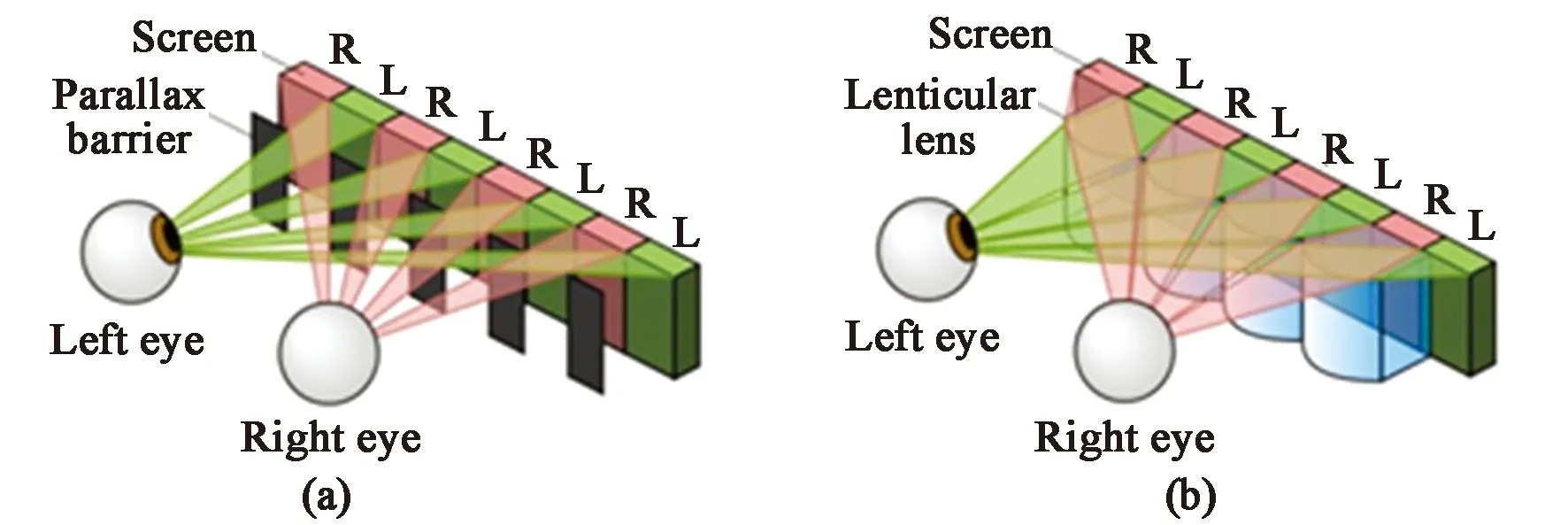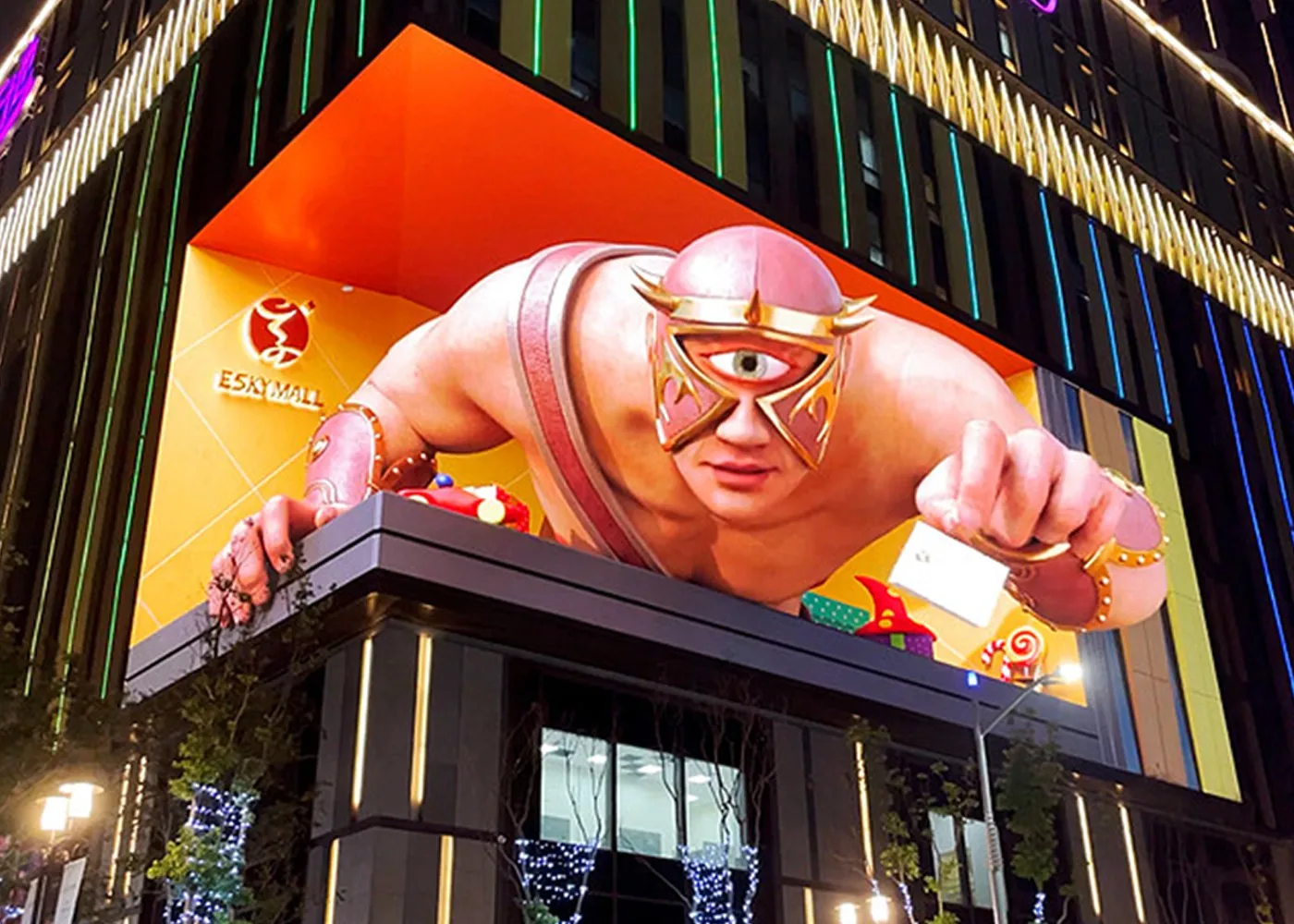
With the continuous advancement of technology, LED displays have emerged as a cutting-edge display technology and have been widely applied across various fields. Among these, 3D LED display, due to their unique technical principles and stunning visual effects, have become a focal point of attention within the industry.
1. Overview of 3D LED Display Screen
3D LED display is an advanced display technology that cleverly utilizes the principle of human binocular disparity, allowing viewers to enjoy realistic and spatially immersive 3D images without the need for any auxiliary tools such as 3D glasses or headsets. This system is not a simple display device but a complex system composed of a 3D stereoscopic display terminal, specialized playback software, production software, and application technology. It integrates knowledge and technologies from various modern high-tech fields, including optics, photography, computer technology, automatic control, software programming, and 3D animation production, forming an interdisciplinary stereoscopic display solution.
On 3D LED display, the displayed content appears as if it leaps off the screen, with objects in the image realistically emerging from or receding into the background. Its color performance is rich and vivid, with strong levels of depth and three-dimensionality. Every detail is lifelike, providing viewers with a genuine three-dimensional visual enjoyment. The naked-eye 3D technology brings stereoscopic images that not only have realistic and lively visual appeal but also create a captivating environment, offering viewers a strong visual impact and an immersive viewing experience, thus being highly favored by consumers.

2. Principles of 3D Technology
Naked-eye 3D technology, also known as autostereoscopy, is a revolutionary visual experience technology that allows viewers to directly perceive realistic three-dimensional images with the naked eye, without the need for special helmets or 3D glasses. The fundamental principle of this technology lies in accurately projecting the corresponding pixels for the left and right eyes to the respective eyes, creating a stereoscopic visual image through the application of the disparity principle.
This technology exploits binocular disparity by using a technique known as the parallax barrier to generate 3D effects. The parallax barrier technique relies on the brain processing the different images received by the left and right eyes to create a sense of depth. In front of a large screen, a structure composed of opaque layers and precisely spaced slits projects the pixels for the left and right eyes to the corresponding eyes. This process, achieved through a carefully designed parallax barrier, allows viewers to clearly perceive stereoscopic images without any auxiliary equipment. The application of this technology not only enhances the viewing experience but also advances display technology, opening up new possibilities for future visual entertainment and interactive methods.

3. Common Types of 3D LED Display
In the current display technology field, 3D LED displays have become a remarkable new display method. These displays mainly utilize LED screens as the primary display device. Given that LED displays can be used both indoors and outdoors, 3D displays are correspondingly categorized into indoor 3D displays and outdoor 3D displays. Moreover, based on the working principles of 3D LED displays, these displays are usually designed into different forms during installation to meet various scenarios and viewing needs. Common forms include right-angle corner screens (also known as L-shaped screens), arc-angle corner screens, and curved screens.
3.1 Right-Angle LED Display (L-shaped LED screen)
The design of right-angle corner screens (L-shaped screens) allows the screen to unfold on two perpendicular planes, providing viewers with a unique visual experience, particularly suitable for corner or multi-angle display scenarios.
3.2 Arc-Angle Corner Screen
Arc-angle corner screens adopt a softer corner design, where the screen extends on two intersecting but non-perpendicular planes, offering a more natural visual transition effect for viewers.
You can use our P10 outdoor LED panel to create your 3D LED video wall.
3.3 Curved LED Display
Curved LED display screen are designed with a curved form, enhancing the immersive viewing experience and providing viewers with a more uniform visual experience from any angle.
These different types of naked-eye 3D displays, with their unique visual effects and flexible installation methods, are gradually transforming our visual experience, bringing new possibilities to fields such as commercial advertising, exhibition displays, and entertainment events.
4. Applications of 3D LED Display
Currently, the application range of 3D technology is extensive. The first wave of marketing benefits has primarily centered on large outdoor screens in commercial centers, with their marketing and commercial value being recognized by numerous brands. However, the application of naked-eye 3D technology is not limited to outdoor screens; it is also widely used in exhibition halls, museums, and indoor conferences.
4.1 Advertising and publicity
Outdoor 3D Advertising Billboard
3D LED displays are quite popular in outdoor advertising. Naked eye 3D LED display can create stunning visual effects and attract more attention. For example, giant 3D LED billboards in shopping malls, landmarks and city centres are able to display vivid 3D animations and special effects, thus enhancing the attractiveness of the advertisement and the impact of the brand.
Indoor 3D LED Display
3D LED displays can be used for branding and product promotion in high-traffic indoor locations such as shopping malls, airports and stations. Through 3D technology, product displays are more vivid and intuitive, and can effectively attract consumers' attention.
4.2 Exhibition halls and pavilions
3D LED displays have been used more and more frequently in major exhibitions, especially with the mutual combination of AR, VR, holographic projection and other technologies, which can not only realise two-way interaction with users, but also display enterprise products more vividly and directly, and become the eye-catching talisman of major exhibition halls.
4.3 Culture and Entertainment
Live performances
3D LED displays can provide an immersive viewing experience in concerts, theatre and other live performances. For example, at concerts, 3D LED displays can show rich visual effects, which can be combined with stage performances to enhance the overall performance effect.
Theme parks and museums
Theme parks and museums also make extensive use of 3D LED displays to create interactive and immersive experiences. For example, roller coasters and entertainment facilities in theme parks can utilise 3D LED displays to enhance the visitor experience, while museums can use 3D displays to make exhibits more vivid and educational.

5. conclusion
3D LED display utilize advanced technology to provide stunning, immersive 3D visuals without the need for glasses. By leveraging human binocular disparity, these displays create lifelike images that appear to leap off the screen, offering a captivating visual experience. Widely used in commercial centers, exhibition halls, and museums, 3D LED displays are revolutionizing visual experiences and opening up new possibilities for advertising and interactive displays.
If you are interested in 3D LED display screen, contact us now. RTLED will make great LED video wall solution for you.
Post time: Jul-26-2024

